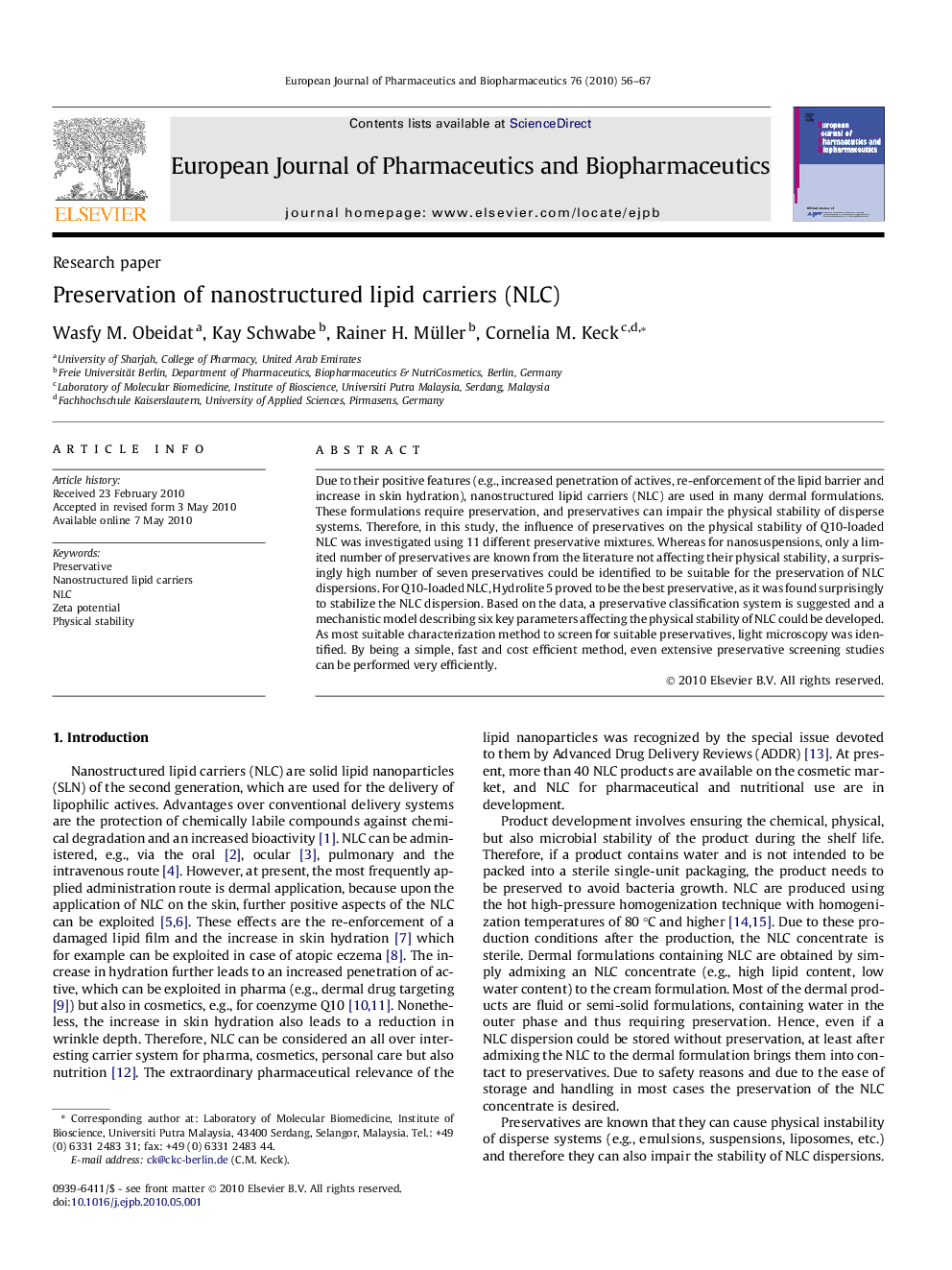| Article ID | Journal | Published Year | Pages | File Type |
|---|---|---|---|---|
| 2084291 | European Journal of Pharmaceutics and Biopharmaceutics | 2010 | 12 Pages |
Due to their positive features (e.g., increased penetration of actives, re-enforcement of the lipid barrier and increase in skin hydration), nanostructured lipid carriers (NLC) are used in many dermal formulations. These formulations require preservation, and preservatives can impair the physical stability of disperse systems. Therefore, in this study, the influence of preservatives on the physical stability of Q10-loaded NLC was investigated using 11 different preservative mixtures. Whereas for nanosuspensions, only a limited number of preservatives are known from the literature not affecting their physical stability, a surprisingly high number of seven preservatives could be identified to be suitable for the preservation of NLC dispersions. For Q10-loaded NLC, Hydrolite 5 proved to be the best preservative, as it was found surprisingly to stabilize the NLC dispersion. Based on the data, a preservative classification system is suggested and a mechanistic model describing six key parameters affecting the physical stability of NLC could be developed. As most suitable characterization method to screen for suitable preservatives, light microscopy was identified. By being a simple, fast and cost efficient method, even extensive preservative screening studies can be performed very efficiently.
Graphical abstractThere are several aims in NLC development (upper left). In case NLC are developed for dermal application aqueous systems are developed and thus preservation is required for long term microbial stability. As preservatives can impair the physical stability of thermodynamically instable systems, a systematic study about the influence of different types of preservatives on the physical stability of a NLC formulation was performed. It was found that preservatives can be classified into four groups (lower left) and that a preservative should be as hydrophilic as possible.Figure optionsDownload full-size imageDownload as PowerPoint slide
